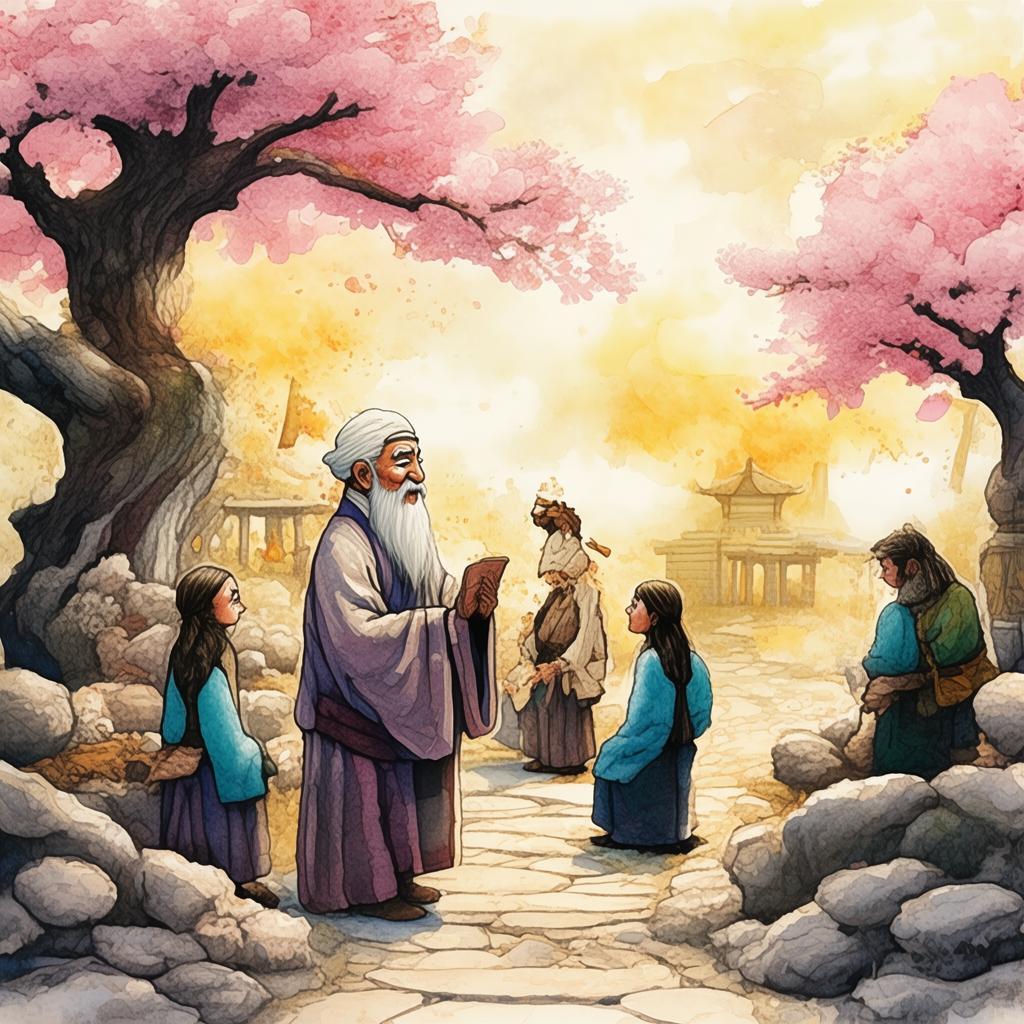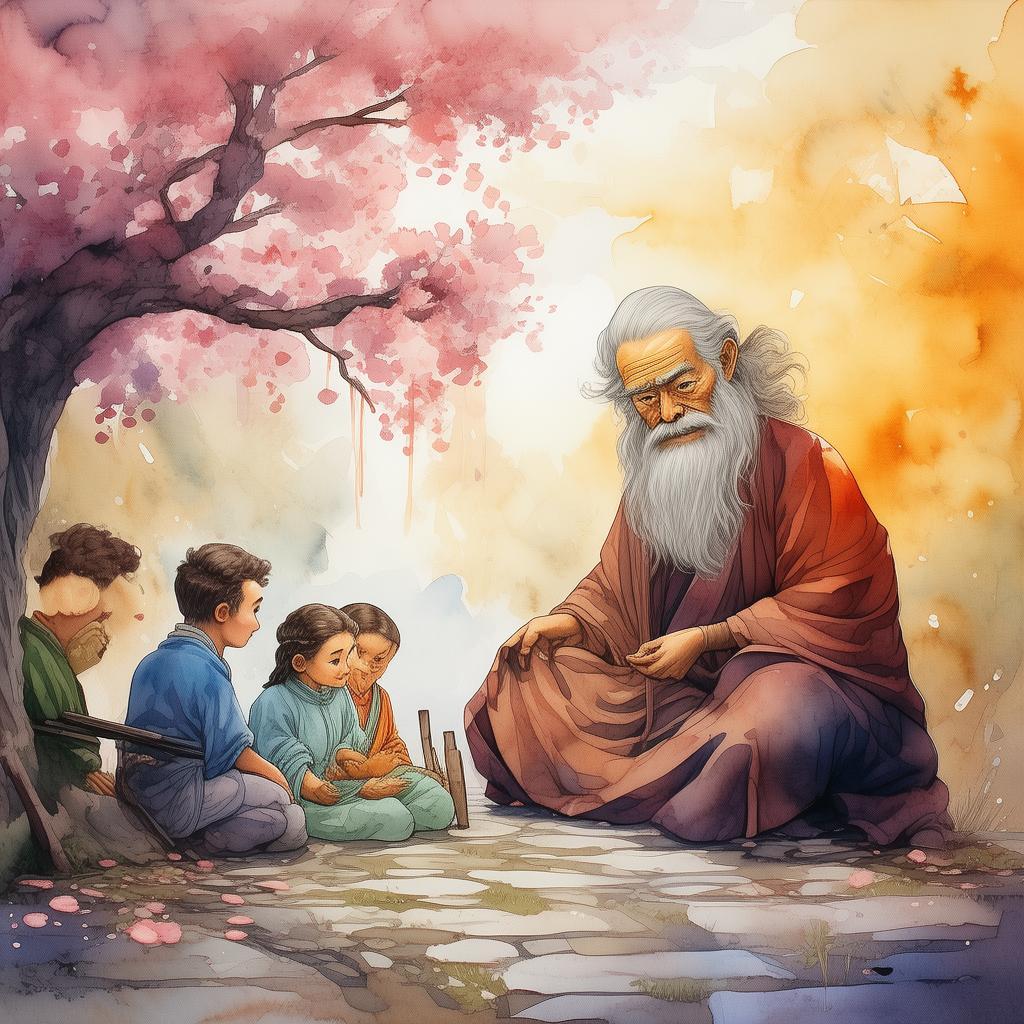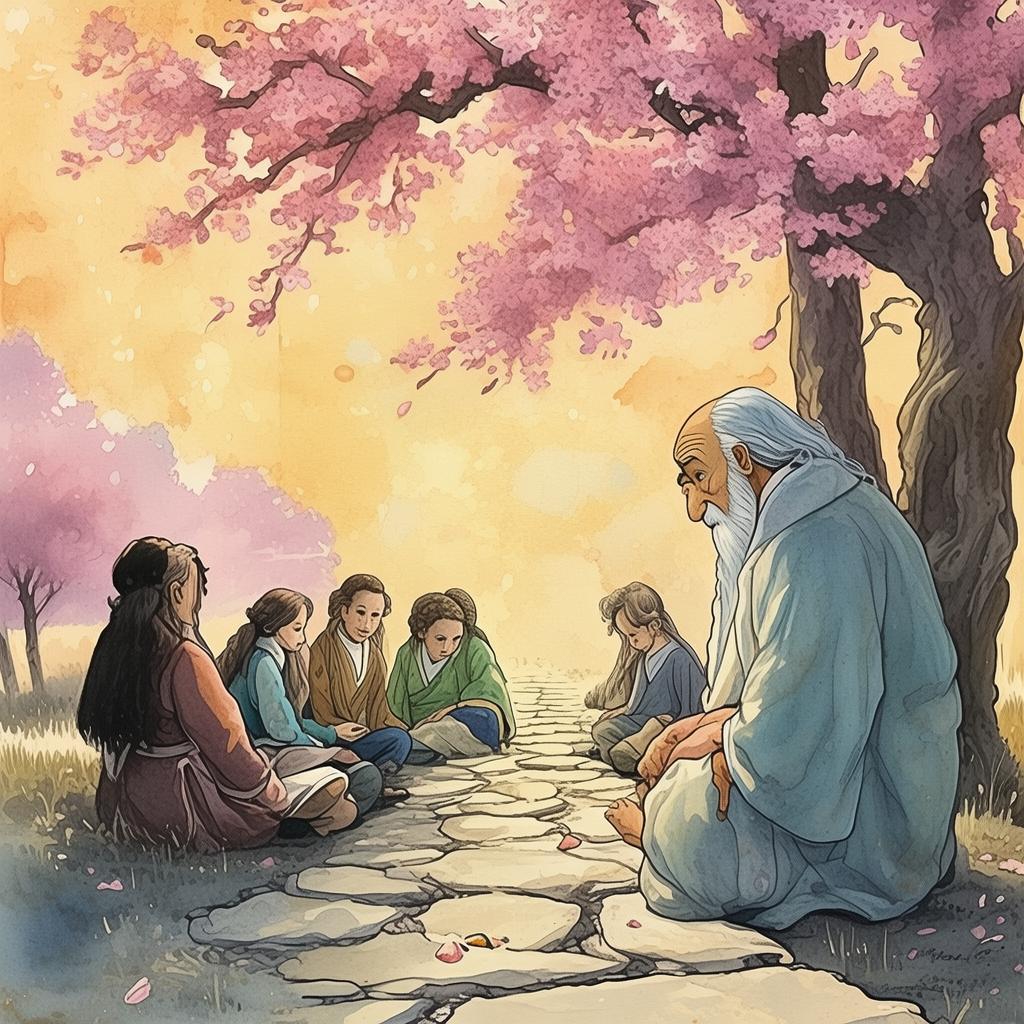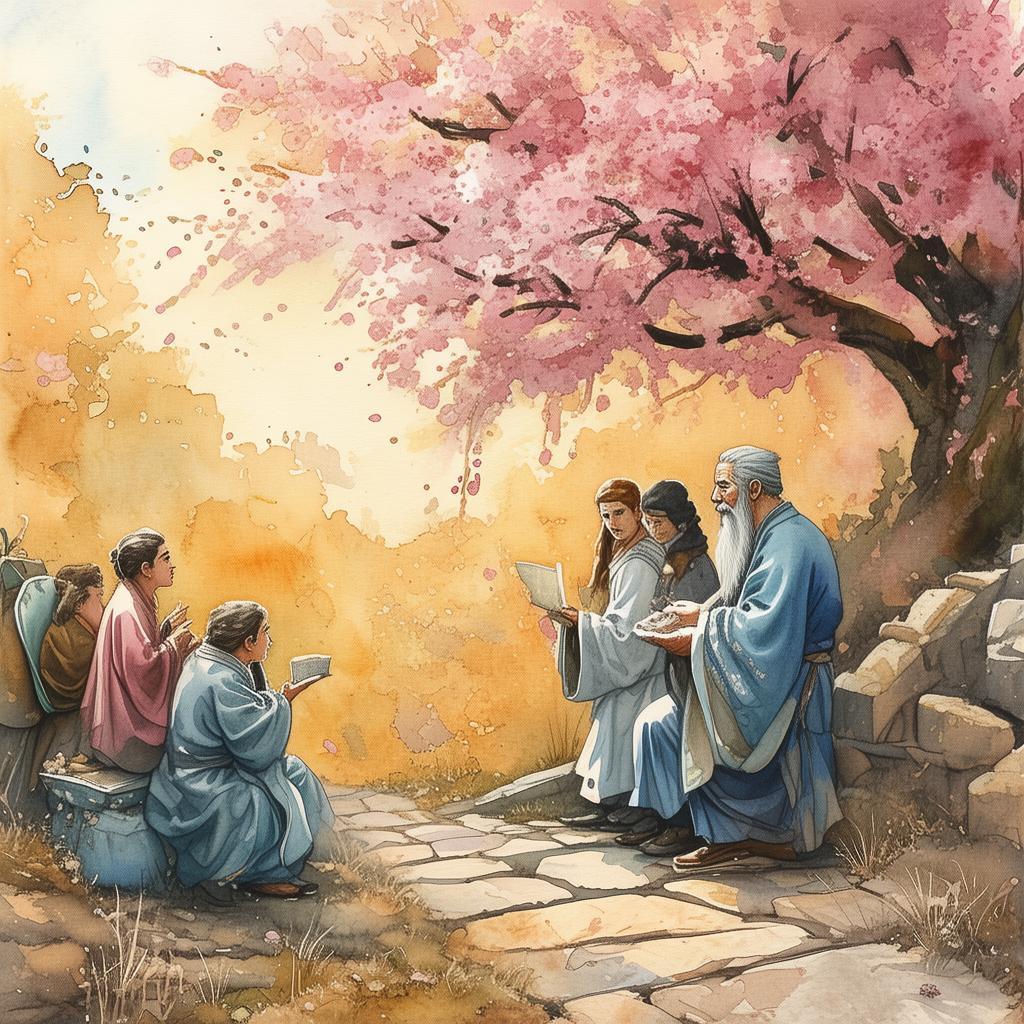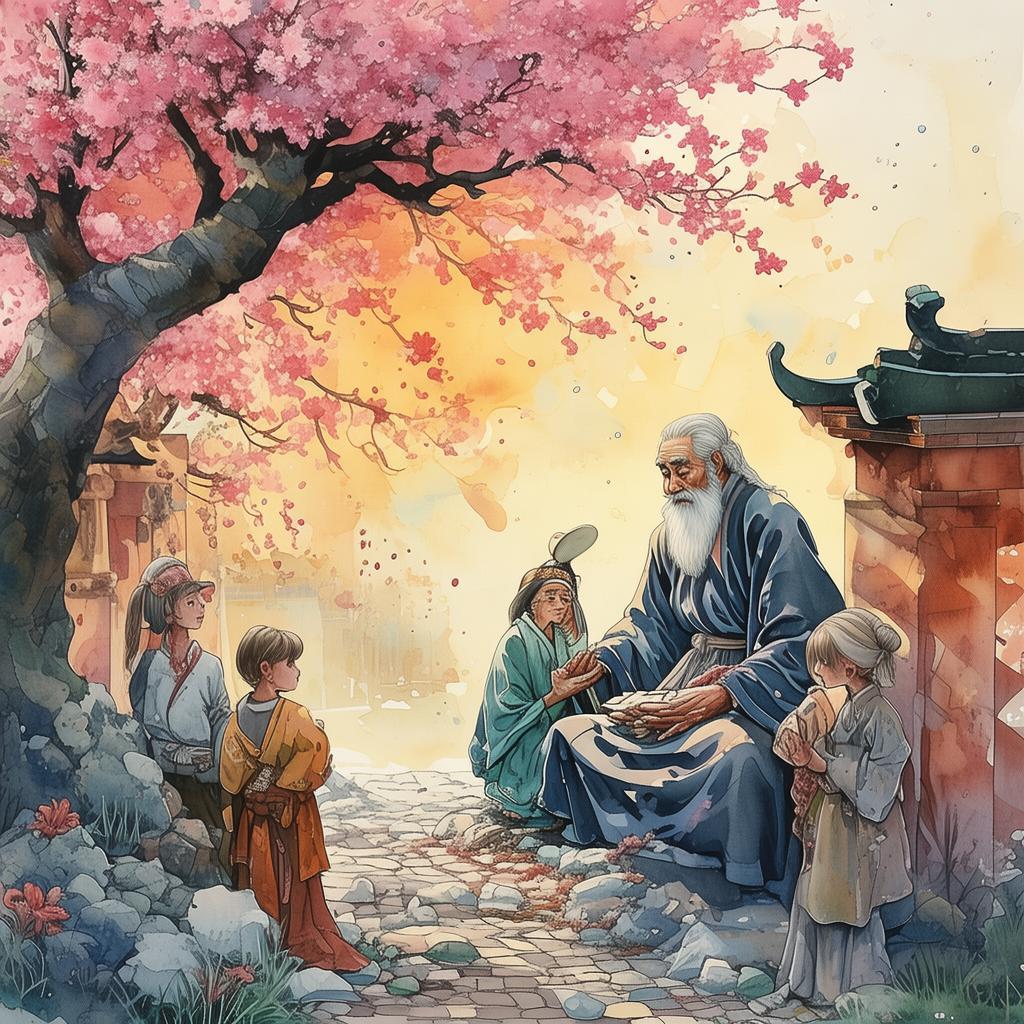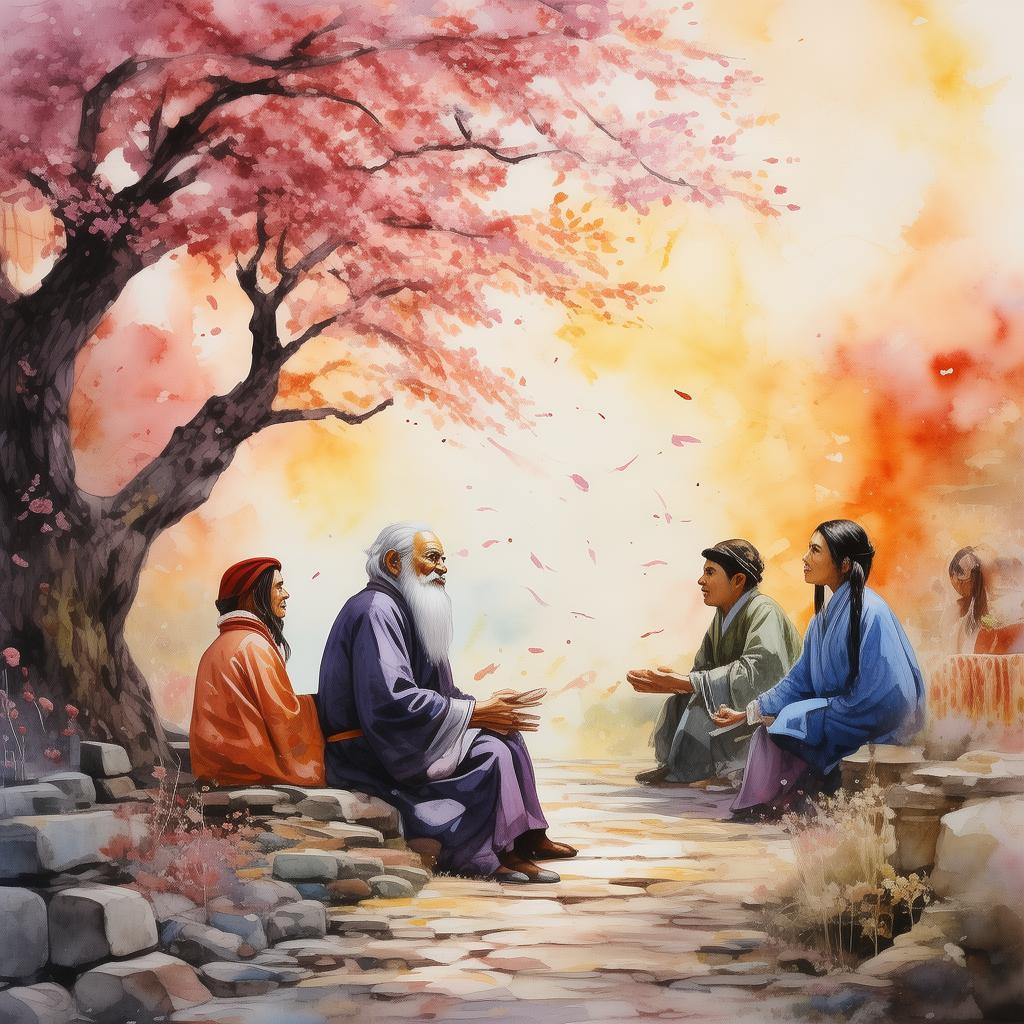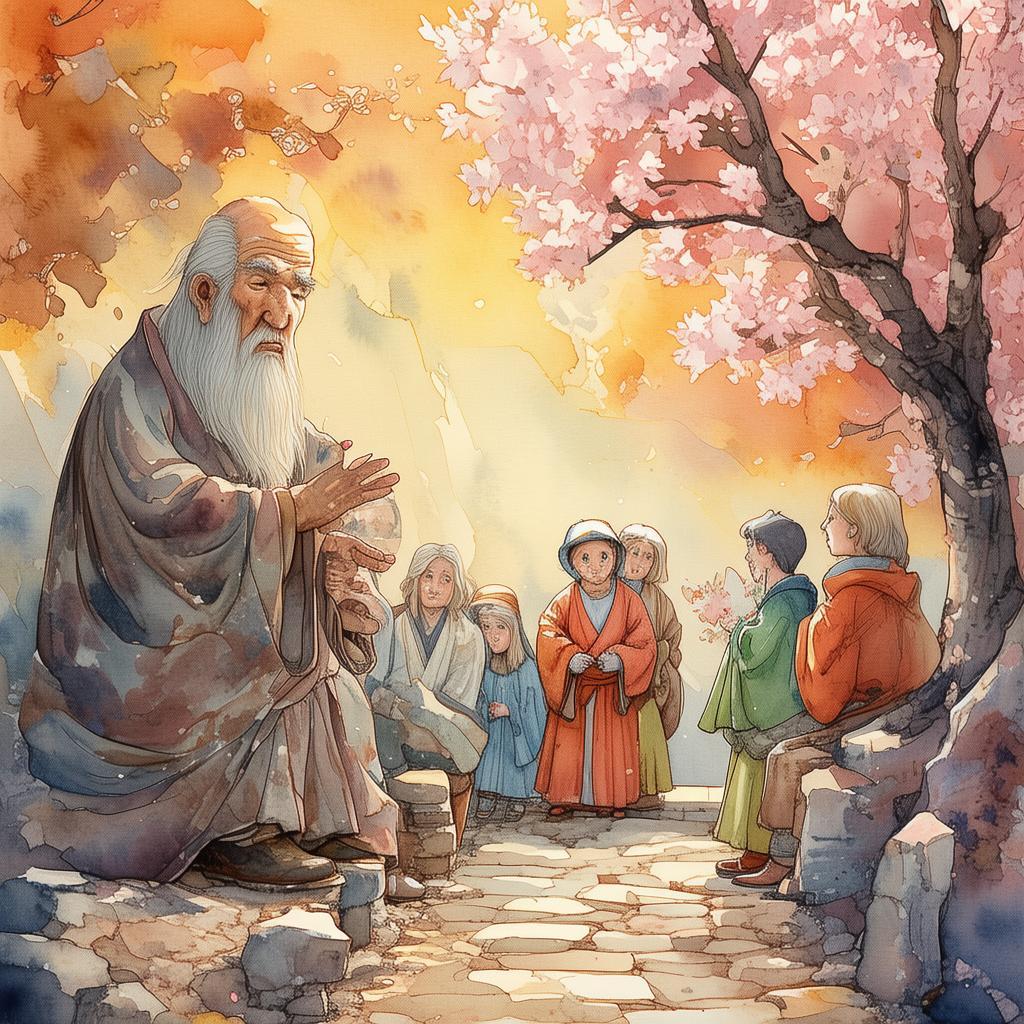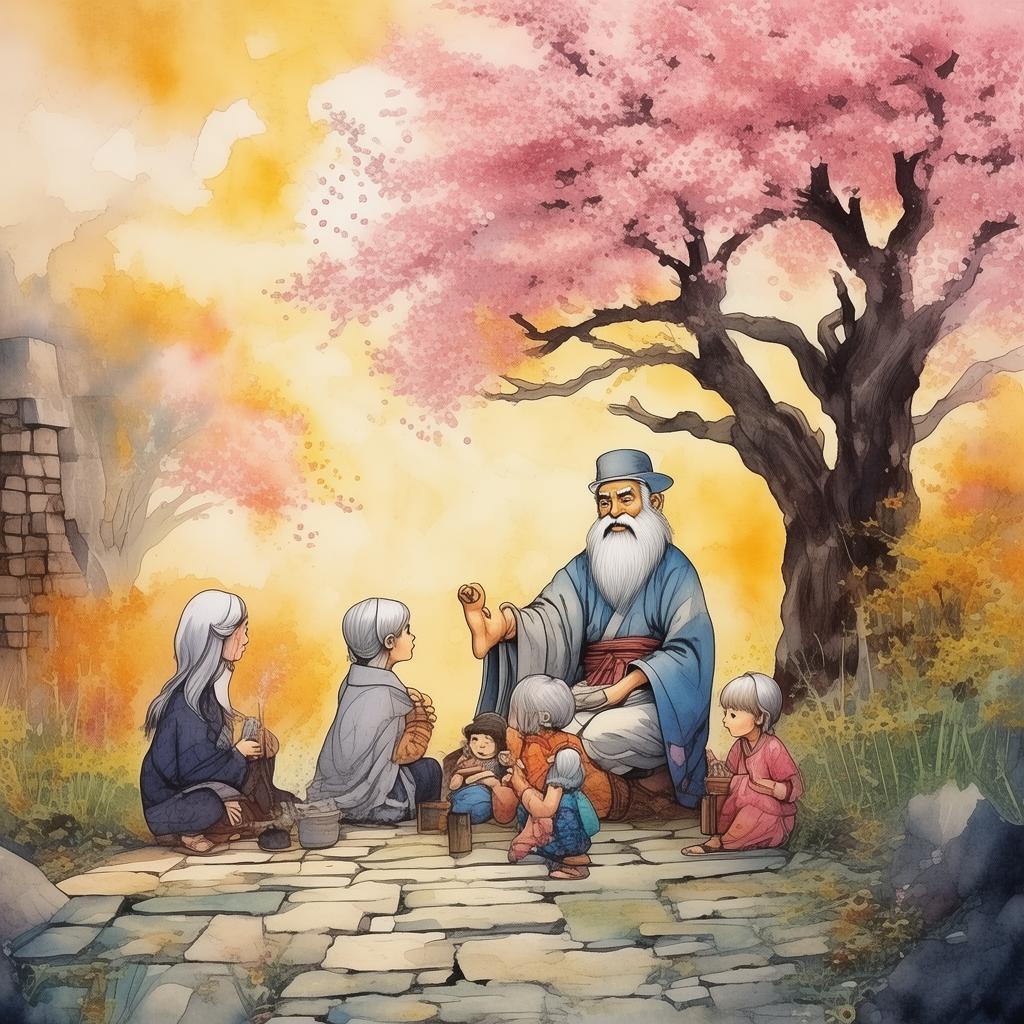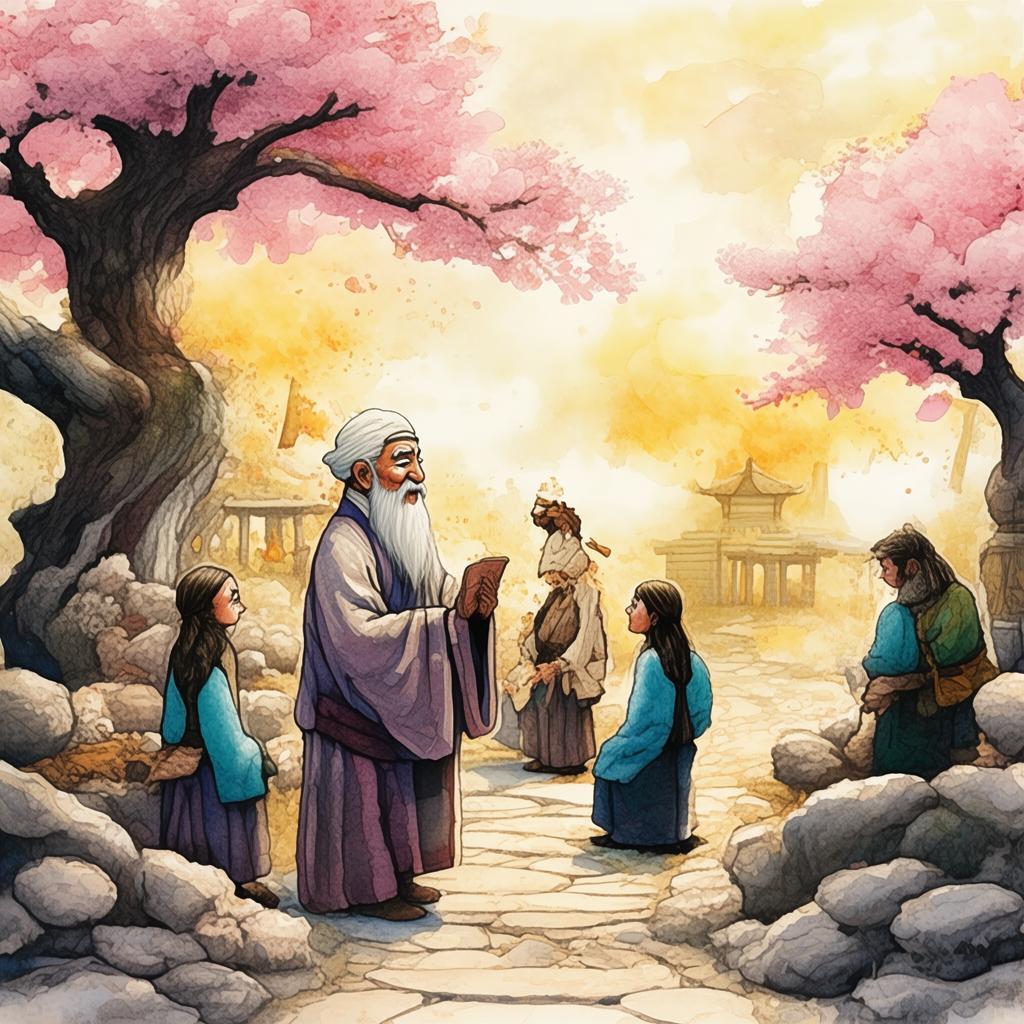Deciphering the Taoist's Enigma
In the tranquil town of Lushan, nestled among the misty peaks of the same-named mountain range, there lived a young scholar named Ming. His father, a local librarian, had instilled in him a love for the ancient texts, and Ming had spent his days poring over the scrolls in their small, dusty library. Among these ancient tomes was one that stood out to Ming more than the rest—the Laozi Code, the sacred text of Taoism.
Ming had always been intrigued by the philosophy of Taoism, its teachings of harmony, simplicity, and the pursuit of the "way" that led to inner peace. However, the Laozi Code was not an easy read. It was filled with riddles and cryptic statements that seemed to defy understanding. One day, Ming found himself drawn to a single sentence that seemed to call out to him: "The Tao that can be told is not the eternal Tao."
Fascinated by this riddle, Ming resolved to decipher its meaning. He knew that he would need to travel far and wide to seek out those who might have the wisdom to help him. With a small bag of rice, a change of clothes, and his cherished copy of the Laozi Code, Ming set off on his journey.
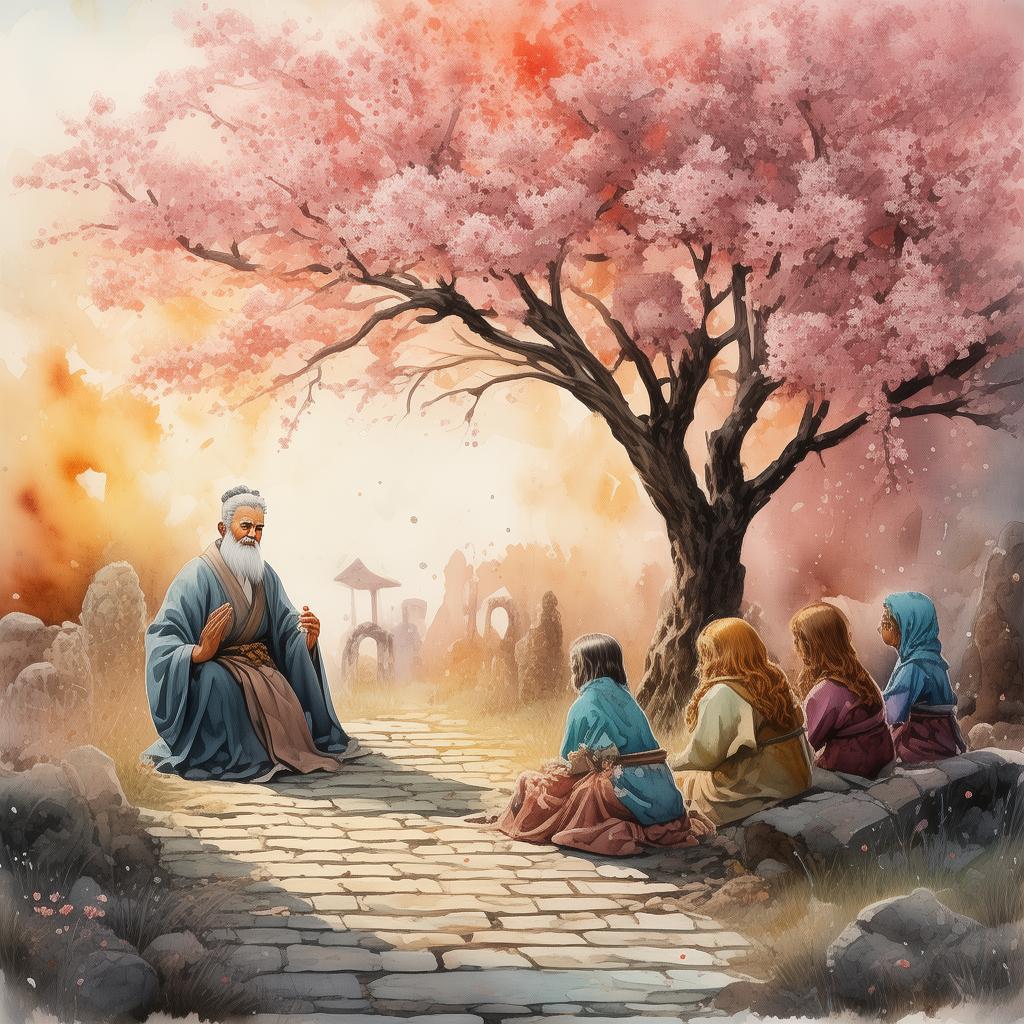
The first sage he met was an old hermit living in a cave on the edge of a vast forest. Ming explained his quest, and the hermit listened intently. "The Tao that can be told is not the eternal Tao," the hermit began, "because words are limited and the Tao is infinite. To truly understand the Tao, one must look beyond the surface, beyond the words, to the essence of things."
Ming's heart raced with excitement. He realized that the sage was hinting at a deeper truth, one that was not to be found in the literal meaning of the words but in their underlying meaning. He asked the hermit if he could share a story that would help him understand better.
The hermit nodded and began to tell a tale of a young farmer who had spent his entire life working the land. The farmer was ambitious and always sought to improve his crops, but he found that no matter how much he toiled, his yield remained the same. Frustrated, the farmer sought the advice of a wise old man.
The old man, seeing the farmer's distress, told him, "The key to a good harvest is not in the amount of effort you put in, but in understanding the rhythm of the land and the seasons. You must work with the land, not against it."
The farmer, enlightened, realized that the old man's words were a metaphor for life itself. Just as he could not force his crops to grow faster, so too could he not force his life to be something it was not. He began to live in harmony with the world around him, and his life flourished as never before.
Ming felt a profound connection to the story and understood that the Laozi Code was teaching him the same lesson—the importance of harmony and simplicity. He continued his journey, seeking out more sages and gathering their wisdom.
The next sage he met was a fisherman who lived by the river. Ming explained his quest, and the fisherman, without hesitation, handed him a fishing rod. "Go to the river," he said, "and learn to fish with the current, not against it."
Ming did as instructed and soon found that when he let the current carry him, he was able to catch more fish than when he fought the water. He realized that the sage was teaching him the importance of flowing with life, not resisting it.
The journey continued, with Ming meeting a monk who taught him about the importance of simplicity in his life, and a doctor who showed him how to heal himself by aligning with the natural flow of his body.
As Ming gathered the wisdom of these sages, he began to understand that the Laozi Code was not a set of rules or principles to be followed, but a guide to living in harmony with the world. He saw that the riddle "The Tao that can be told is not the eternal Tao" was a reflection of the infinite nature of the Tao, which could never be fully captured in words.
Upon returning to his hometown, Ming found that his understanding of the Laozi Code had changed him. He no longer sought to control his life or the lives of others. Instead, he embraced simplicity and harmony, living in accordance with the Tao.
One day, as he was walking through the library, he noticed a young boy struggling to carry a heavy book. Ming, now a sage in his own right, smiled and offered to help. "The Tao that can be told is not the eternal Tao," he said gently, "but it is the path to a peaceful heart."
The boy, puzzled, asked, "But how do I find this Tao?"
Ming looked into the boy's eyes and replied, "You find it by looking within. The Tao is not out there; it is in you."
And so, Ming's story spread far and wide, inspiring others to seek the Tao within themselves and live in harmony with the world. The young scholar's quest to decipher the ancient Taoist's riddle had not only brought him enlightenment but had also brought peace and harmony to the world around him.
In the end, Ming realized that the true purpose of the Laozi Code was not to be deciphered but to be lived. The riddle itself was a lesson in the nature of truth, a truth that could only be fully understood through experience and personal discovery.
✨ Original Statement ✨
All articles published on this website (including but not limited to text, images, videos, and other content) are original or authorized for reposting and are protected by relevant laws. Without the explicit written permission of this website, no individual or organization may copy, modify, repost, or use the content for commercial purposes.
If you need to quote or cooperate, please contact this site for authorization. We reserve the right to pursue legal responsibility for any unauthorized use.
Hereby declared.
